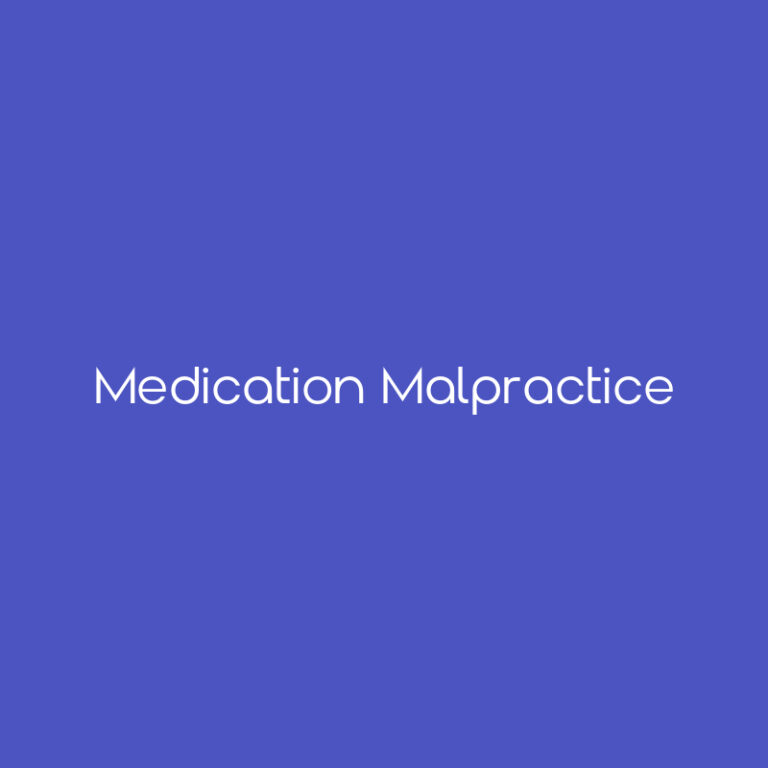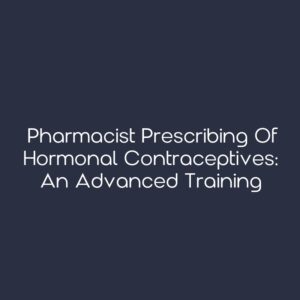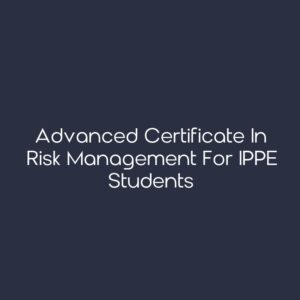Medication Malpractice

Medication Malpractice
This course provides a detailed exploration of pharmacy liability, offering pharmacists a comprehensive understanding of its intricate landscape. Through vivid case studies spanning international jurisdictions, learners will dissect multifaceted challenges encountered by pharmacists, from dosage errors to procedural oversights. After an extensive analysis of legal fundamentals and nuances related to pharmacy workflow, learners will gain a thorough understanding of negligence and liability within pharmacy practice. Moreover, course content will emphasize practical strategies for risk mitigation, empowering learners to navigate complex scenarios with confidence while prioritizing patient safety and professional integrity. With a focus on both theoretical knowledge and real-world application, learners will emerge equipped to uphold the exemplary standards of pharmacy practice and minimize the potential for malpractice.
Upon successful completion of this knowledge-based CPE course, pharmacists should be able to:
1. Describe the elements of a plaintiff’s claim for punitive damages following a pharmacy dispensing error.
2. Discuss the role of an expert witness in a pharmacy malpractice lawsuit.
3. Explain how to avoid liability for punitive damages in a pharmacy malpractice lawsuit.
4. State the four essential elements of a pharmacist malpractice liability lawsuit.
5. Review the legal defenses that a pharmacist can present in a pharmacist malpractice liability lawsuit.
6. Explain the importance of the standard of care in a pharmacist malpractice liability lawsuit.
7. List the most common types of pharmacy practice errors that lead to legal claims of malpractice.
8. Summarize the legal basis for a pharmacy malpractice lawsuit.
9. Discuss techniques that can be implemented to reduce pharmacy errors and to avoid liability for pharmacy malpractice.
10. Describe the legal procedures for consideration of a pharmacy malpractice case by a court of law.
11. Discuss how a pharmacist can participate effectively in the process of malpractice litigation to promote a successful result.
12. Outline the process through which the civil justice system considers malpractice claims against a pharmacist or pharmacy.
13. Explain how malpractice liability may differ between institutional pharmacy practice and community pharmacy settings.
14. Review how errors in order processing can lead to malpractice liability within an organized healthcare system.
15. Identify strategies for institutional pharmacy practice to reduce potential exposure to malpractice liability.
16. Describe the evolution of a pharmacist’s duty to warn as legal precedent in pharmacy malpractice litigation.
17. Explain the difference between a generalized duty to warn and a specialized duty to warn.
18. Identify steps pharmacy risk managers can take to reduce exposure to malpractice liability for violating the duty to warn.
19. Recall the evolution of the pharmacist’s professional role as a provider of medication-related information to patients.
20. Articulate the basis of the “no generalized duty to warn” approach that has been recognized in pharmacist malpractice cases.
21. Describe the exceptions to the “no generalized duty to warn” approach that imposes liability on pharmacists for the failure to warn patients.
22. Summarize the potential hazards of using incautious language when engaged in patient counseling.
23. State the types of comments that might be made by a pharmacist to a patient that would expose the pharmacist to legal consequences.
24. Identify risk management strategies for reducing malpractice liability during pharmacist-led patient education.
25. Discuss the circumstances in pharmacy practice where patient counseling and prescriber consultation may be insufficient to meet the pharmacist’s standard of care.
26. Explain the difference between the duty owed to a patient and the standard of care in pharmacy in a pharmacist malpractice lawsuit.
27. Describe the legal expectations of pharmacists who are presented with a prescription that could be fatal to the patient.
28. List the requirements of dispensing pharmacists pursuant to the federal guidelines for Prospective Drug Use Review.
29. Recognize how pharmacists may be required to consult prescribers to resolve drug therapy problems beyond what patient counseling can address.
30. Discuss risk management strategies to prevent pharmacy malpractice liability for failing to effectively address harmful medication orders.
31. Define the concept of “corporate liability” and the role of hospital employees in the direct provision of care to hospital patients.
32. Explain how the pharmacy department can protect the hospital from liability by preventing adverse patient outcomes and fostering positive ones.
33. Describe the growing legal responsibilities of institutional pharmacists due to increased access to patient data and integration into the healthcare team.
34. List the types of comments in the patient care record that could lead to exposure to malpractice liability.
35. Explain the difference between necessary patient care record notations and comments that could imply a breach of the standard of care.
36. Outline strategies for the use of risk-sensitive language by pharmacists in patient care documentation.
37. Discuss the importance of expert witness reports in pharmacy malpractice litigation.
38. Explain the inferences that can be drawn by experts who evaluate pharmaceutical care without documented records.
39. Describe the exposure to malpractice liability that can be created by the failure of pharmacists to document their clinical care.
40. Indicate how a patient may become dissatisfied with pharmacy services due to a perceived personal affront.
41. Discuss effective strategies for identifying and managing potentially litigious patients upset due to personal antipathy toward a pharmacist or pharmacy.
42. Identify the types of situations that present controversies in pharmacy that can escalate into a litigious situation.
43. Explain the background of the patient safety movement and its relevance to pharmacy practice.
44. Discuss the basic principles of continuous quality improvement (CQI) as applied to the pharmacy practice setting.
45. Describe a procedure for creating a pharmacy CQI program that reduces the exposure of pharmacists and pharmacies to malpractice liability.
David B. Brushwood, R.Ph, J.D.
Senior Lecturer, The University of Wyoming School of Pharmacy
Pharmacy Law Content Developer, CEimpact
David B. Brushwood has no relevant financial relationships with ineligible companies to disclose.
This is not an ACPE-defined Certificate Program; learners who complete this course will receive ACPE CPE credit but will not be awarded completion of a Certificate Program.
Course fee includes course, course materials, and CPE credit submission to CPE Monitor.
Initial Release Date: May 6, 2024
Planned Expiration Date: May 6, 2027
This program is provided for educational purposes. CEimpact is not a law firm and does not provide legal advice of any kind. For legal advice, please contact a licensed attorney.
Copyright 2024, CEimpact. All Rights Reserved. Any reproduction of this course without express permission is strictly forbidden.
![]() CEImpact is accredited by the Accreditation Council for Pharmacy Education as a provider of continuing pharmacy education. Obtain CPE credit by completing the course, followed by the exam and evaluation (if applicable). Once successfully completed, your course will appear in your Completed Courses tab. Access your CPE statement of credit at www.MyCPEMonitor.net.
CEImpact is accredited by the Accreditation Council for Pharmacy Education as a provider of continuing pharmacy education. Obtain CPE credit by completing the course, followed by the exam and evaluation (if applicable). Once successfully completed, your course will appear in your Completed Courses tab. Access your CPE statement of credit at www.MyCPEMonitor.net.
¹CEImpact provides you with two (2) opportunities to complete the exam. The learner will not receive CPE credit after two failed attempts.
Additional information
| Duration | 15h 0m |
|---|---|
| Topic Designator | Law |
| ACPE | Yes |
| ACPE Topic | 03 Law |
| Role | Pharmacist |
| Media-Type | Written |
| Release Date | 5/6/24 |
| CEUs | 1.5 |
| ACPE Number | 0000-0107-24-141-H03-P |
$199.00

![Pharmacy and Continuous Glucose Monitoring: The Sweetest Pairing [Technician]](https://www.ceimpact.com/wp-content/uploads/product_images/18581_20250219-300x300.jpg)


